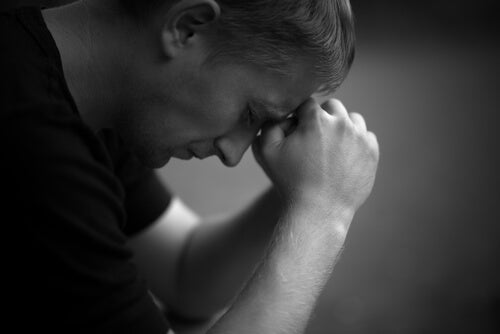According to a study that experts from the University of Freiburg (Germany) conducted, it’s not unusual that painters of all times have represented sadness with images of low light. In fact, there’s a direct relationship between depression and the color gray.
There has always been talk about the relationship between depression and the color gray. In fact, when a person is sad, people say that everything looks gray or that the world has no color. Well, science has proven that this isn’t a metaphor, but that this visual effect does indeed take place.
According to data from the World Health Organization, depression could be affecting 300 million people in the world. This is an estimate, since many people never report the cases. Some people don’t believe it’s a problem that a professional should treat.
Likewise, it also isn’t easy to diagnosis this problem, since not every state of sadness is equivalent to being depressed in the strict sense. Therefore, the relationship between depression and the color gray could be a new way to diagnose this problem more accurately.
Understanding depression
It’s important to note that psychiatry and psychoanalysis define and approach depression differently. In psychiatry, and in most streams of psychology, depression is a disorder on its own. On the other hand, in psychoanalysis, they consider it a symptom.
In the field of psychiatry, they approach depression as a serious illness, which generates different physical and mental symptoms. The more organismic sectors of this science emphasize the relationship between brain chemistry and depressive states. Therefore, they treat the problem mainly through medication.
In psychoanalysis, there’s no structure called depression. It’s a symptom of a neurotic or psychotic structure. It’s a feeling of self-hatred, which is actually a hatred that others don’t recognize. This emerges when someone experiences failure and it leads to loss of hope and is dealt with through words.
In reality, the two approaches complement each other, although in practice they have become divergent. Every life experience generates chemical reactions in the brain. And vice versa. This is because the brain is a plastic organ, which changes according to a substance, as well as according to an experience. For example, a word could be causing it.
Depression and the color gray
A lot of research is currently underway to better understand the brain, from an organic and physiological point of view. Experts conducted one of these studies at the University of Freiburg in Germany. They found a direct relationship between depression and the color gray.
Specifically, the scientists found that depressed people have great difficulty in detecting the contrast between black and white. Also, they concluded this after électrocardiograms were applied to the retina of the eye, to a group of volunteers.
The research was conducted by Dr Ludger Tebartz van Elst. According to his measurements, depressed people see the world in a similar way to how it appears on television when the color contrast is low. The greater the depression, the less the ability to visualize color contrast.

Diagnosis
The fact that scientists found such a relationship between depression and the color gray could become a reliable indicator for diagnosing both the presence and the level of depression in people. In fact, the journal Biological Psychiatry confirmed that this would be a more objective method of diagnosis than the one experts currently use.
We should remember that, at present, experts diagnose depression mainly on the basis of the criteria of health professionals, especially psychologists and psychiatrists. They interview the patient and inquire about their lifestyle, approach, and various symptoms. From this, they conclude whether the person has depression or not. However, this isn’t always a perfect diagnosis.
With the discovery of the relationship between depression and the color gray, which is perfectly measurable physically, it would be possible to make significant progress in diagnosis. Not only would it be possible to confirm whether depression is indeed present, but also to calculate its intensity.
In any case, this type of diagnosis would need a comprehensive evaluation. It’s worth mentioning that not every state of sadness is depression as such. Professionals must assess context, duration, state of health, and other variables.
7 Things Emotionally Dependent People Do
The post The Curious Relationship Between the Color Gray and Depression appeared first on Exploring your mind.



















Comments